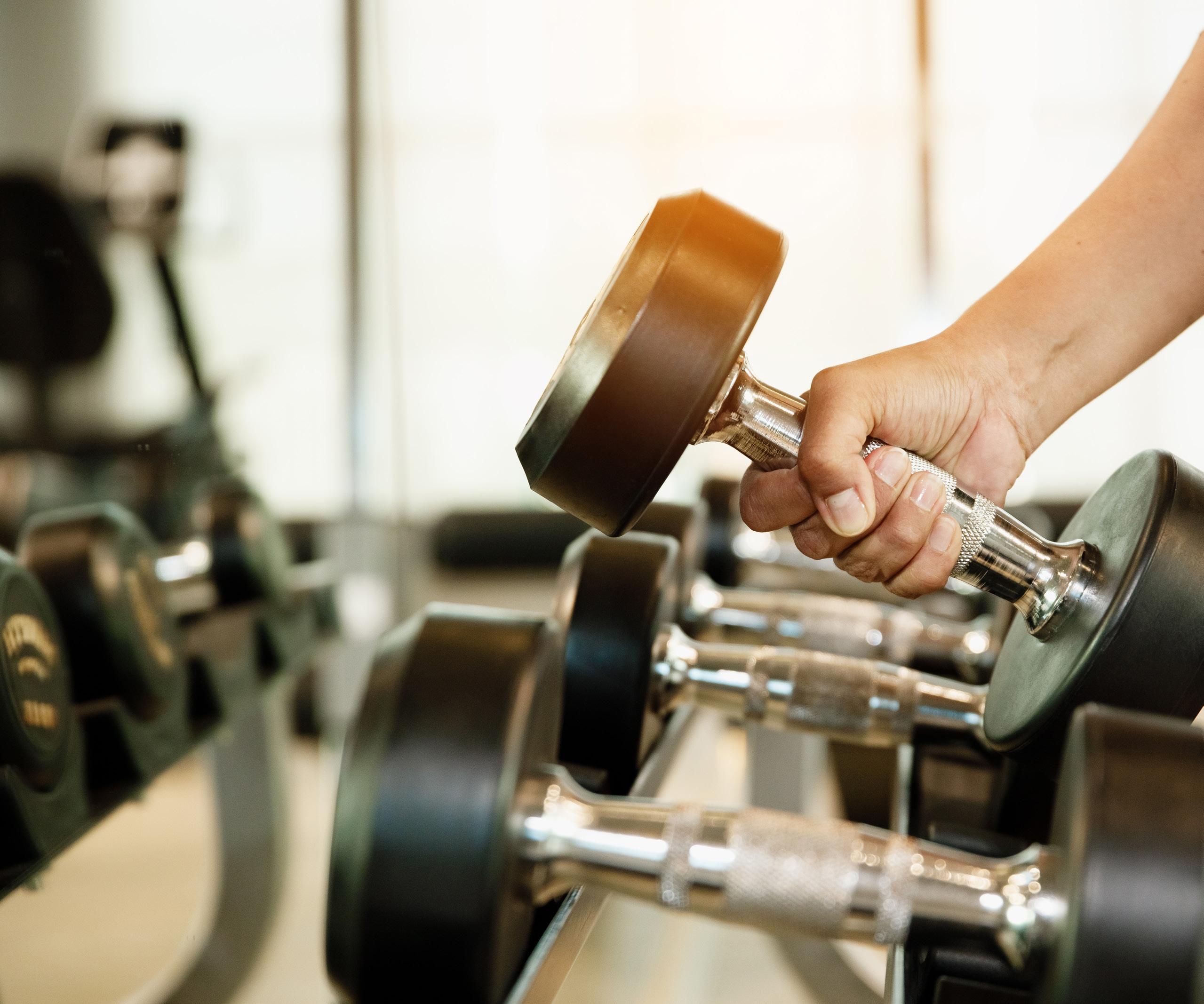

Course Overview
As the first of its kind, the UESCA Strength and Conditioning for Endurance Athletes Certification is the only S&C certification specifically created for endurance sport coaches. Unlike many personal training or strength and conditioning courses, that focus on fat loss, ‘toning,’ muscle hypertrophy or speed and quickness, this certification is only focused on strength training for endurance athletes.
This course takes a deep dive into all things strength and conditioning as it relates to working with endurance athletes. This certification also delves into all systems of the body as it is critical to understand how each system affects others.

Contributor
Dominique (Dee) Stasulli
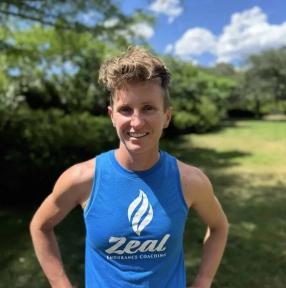
Dee is an endurance and strength coach [owner of Zeal Endurance Coaching] for competitive amateur and recreational athletes across a range of endurance sport disciplines.
Her master’s degree is in Kinesiology - Sports Conditioning and she’s an NSCA Certified Strength and Conditioning Specialist. She loves to combine the science of exercise physiology with the art of coaching in the field. She also currently teaches anatomy/physiology, kinesiology, and pathophysiology to pre-healthcare students on the community college level. Personally, she is a former DII collegiate cross-country/track and field athlete and now participates in a variety of sports year-round, but racing trail and multisport events are her favorite.
About UESCA
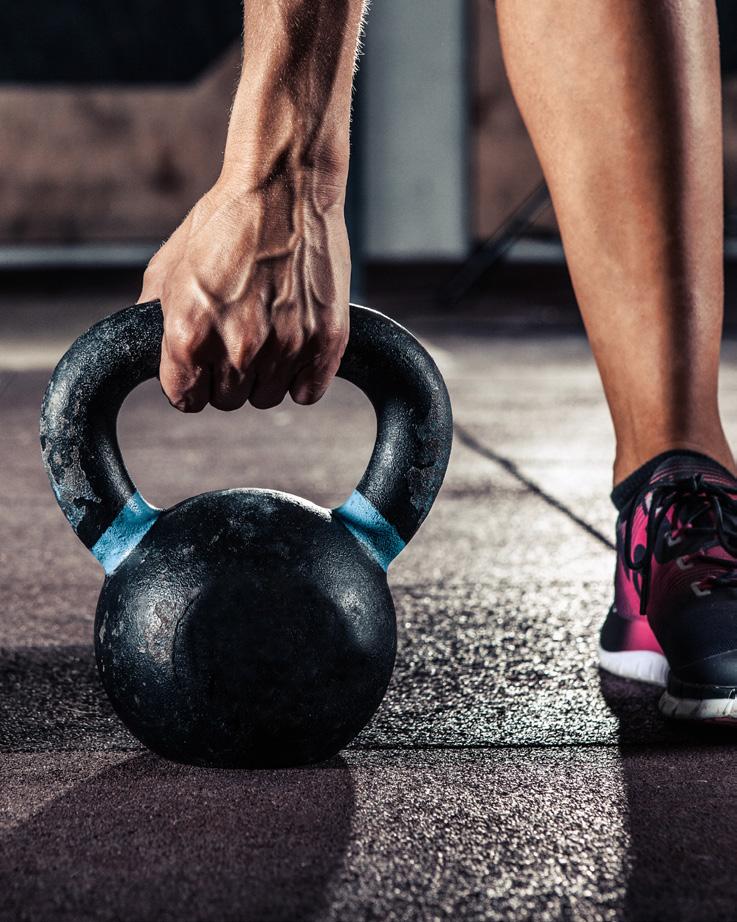
∞ About UESCA
United Endurance Sports Coaching Academy (UESCA) is the global leader in endurance sports coaching education. Established in 2014, the goal of UESCA is to raise the standard of endurance sports education by producing the highest-quality, science-based content via researching the latest and most pertinent research and by selecting top experts across various disciplines to provide content.
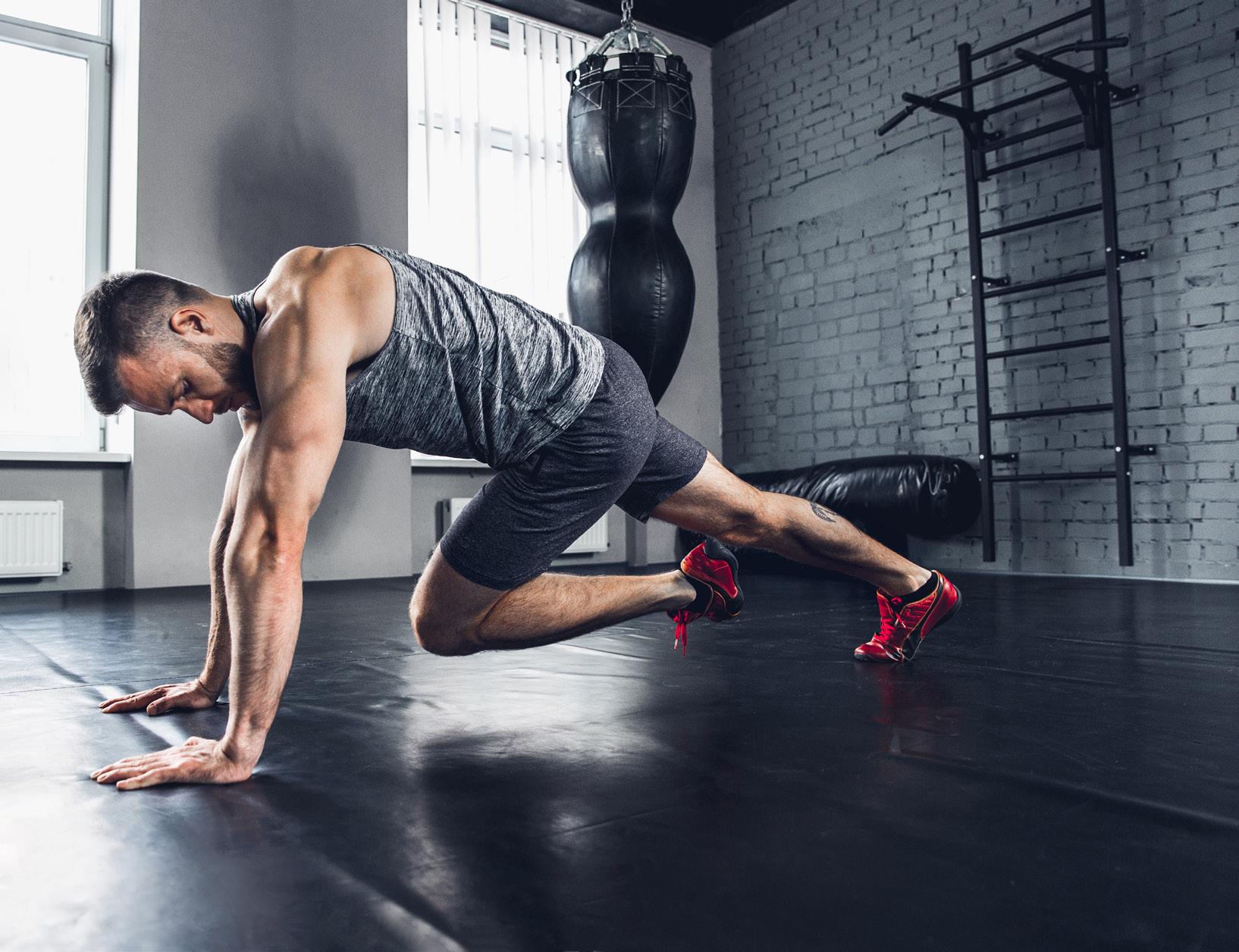
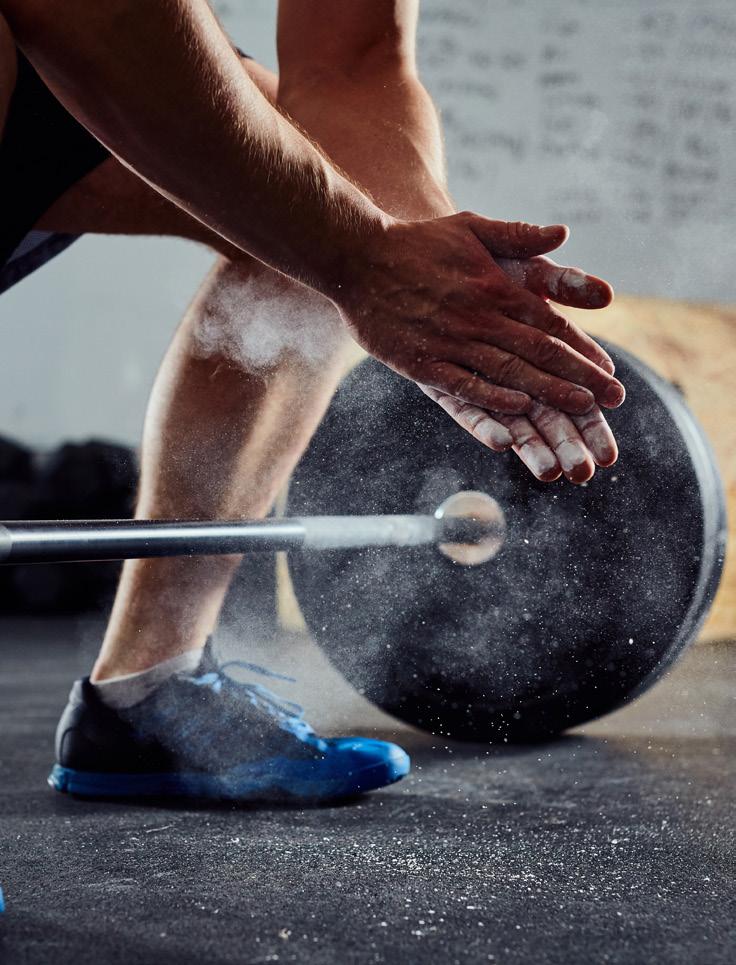
Just as important, we strive to provide exceptional customer service and support to those thinking of purchasing a certification, and to our existing coaches.
∞ Strength and Conditioning for Endurance Athletes Certification Development Process
The UESCA Strength and Conditioning for Endurance Athletes Certification was developed out of necessity as there was no resource for endurance coaches looking for thorough and factual S&C information. Our lead contributor, Dee Stasulli designed the certification to first educate students on the physiology of the various systems that influence strength training. After these ‘foundational’ modules, students learn how to apply this information to strength training protocol, including concurrent training, individualized program design.
∞ What You’ll Learn
After successful completion of this certification, you will have a robust and working knowledge of how various systems of the body are affected by strength training and how to properly and safely create strength training programs for endurance athletes.
What’s Included

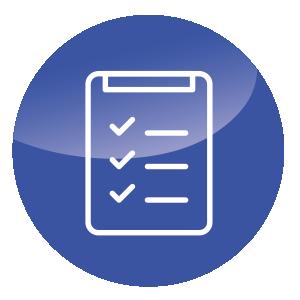

16 comprehensive online modules Downloadable PDF course Module quizzes



One-year Muscles and Motion app subscription Online practice quizzes and final exam
Email Study Support
The Certification Modules
∞ About This Certification
∞ Module 1: Course Introduction
∞ Module 2: Foundations of Human Movement
∞ Module 3: Functional Anatomy and Physiology of the Skeletal System
∞ Module 4: Functional Anatomy and Physiology of the Muscular System
∞ Module 5: Functional Anatomy and Physiology of the Neuromuscular System
∞ Module 6: Bioenergetics and Metabolism
∞ Module 7: Neuroendocrine Physiology
∞ Module 8: Functional Anatomy and Physiology of the Cardiovascular System
∞ Module 9: Functional Anatomy and Physiology of the Respiratory System
∞ Module 10: Optimizing Adaptation with Recovery
∞ Module 11: Principles of Strength Training
∞ Module 12: Principles of Program Design
∞ Module 13 : Movement Preparation and Coaching Skills
∞ Module 14: Exercise Technique and Correction
∞ Module 15: Resistance Training Equipment
∞ Module 16: Step-by-Step Program Design
∞ Module 17: Glossary
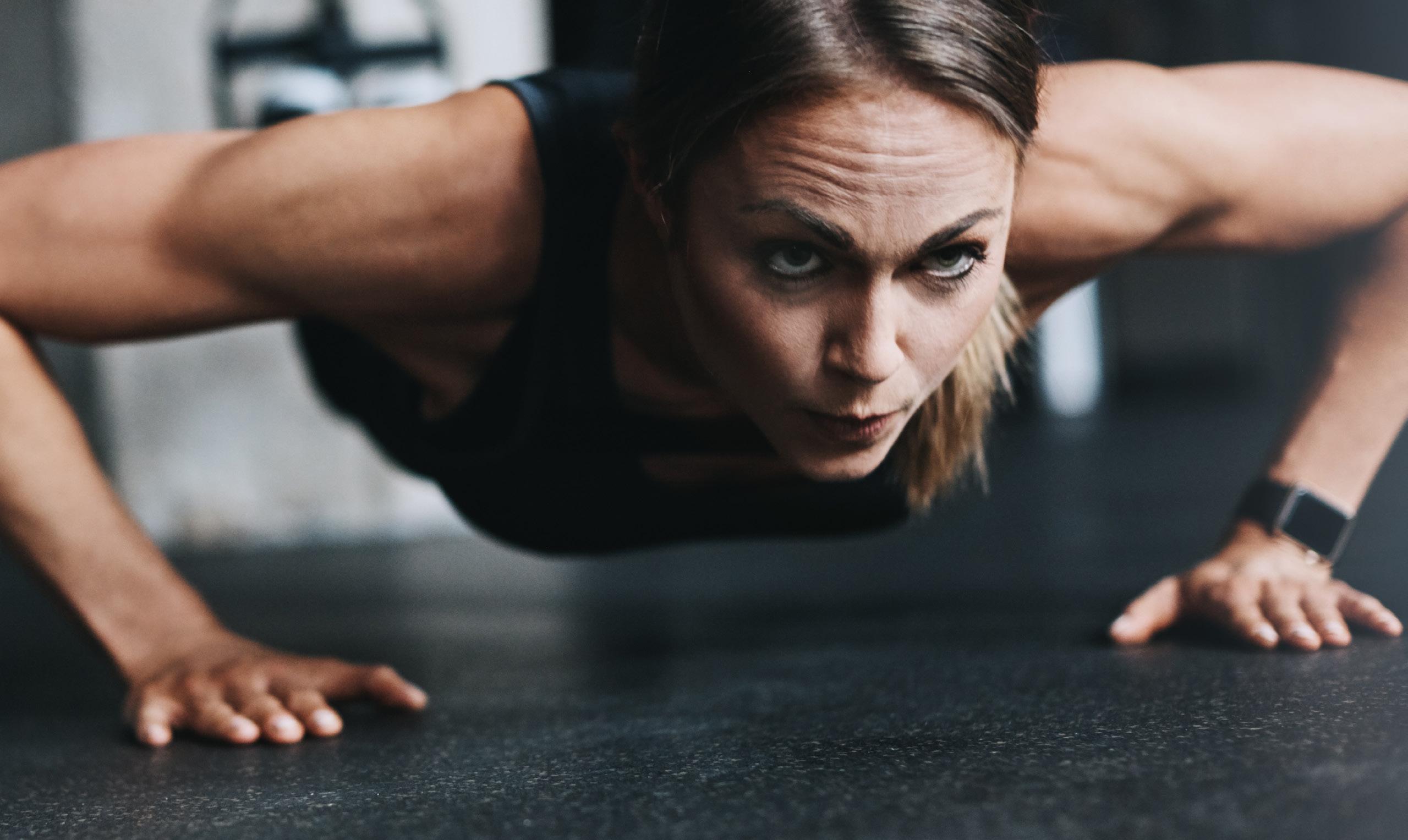
Testimonials
A full knowledge experience, based on science content and easy to understand.
— Julian Guerra
I truly believe UESCA has offered the best education possible for its coaches. I felt the education was applicable and prepared you for real world coaching.
— Katharine Moustakes
UESCA has an amazing coaching program. Not only that, but to be in the community and be able to bounce ideas and questions off hundreds of other coaches is just amazing
— Jennifer Dostart
Strength and Conditioning for Endurance
Athletes Certification Course Syllabus
Module 1: Course Introduction
∞ About This Course
o Certification Structure
o No Tiers
o Best Practices and Policies
o Strength and Conditioning Certification Principles
∞ Activate Your Muscles & Motion One-Year License
∞ Full Course PDF Download
Module 2: Foundations of Human Movement
∞ Introduction and Learning Objectives
∞ Overview of the Human Movement System
o System Integration
∞ Anatomical Position and Terminology
o Anatomical Directions
o Anatomical Regional Terminology
∞ Planes and Axes of Motion
o Planes of Motion
o Axes of Motion
o Application in Strength and Conditioning
∞ Biomechanics
o The Importance of Understanding Biomechanics
o Important Aspects of Understanding and Applying Biomechanical Knowledge
o Key Terminology Related to Biomechanics
o The Laws of Movement
o Kinematics and Kinetics
o Joint Angles
o Levers of the Body
o Mechanical Advantage
o Classes of Levers
o Application of Levers in Strength and Conditioning
o Function Follows Form
∞ Summary and References
Module 3: Functional Anatomy and Physiology of the Skeletal System
∞ Introduction, Learning Objectives, Key Terminology
∞ Overview of the Skeletal System
o Functions of the Skeletal System
o Major Components of the Skeletal System
» Bones
» Joints
» Cartilage
» Ligaments
» Tendons
∞ Bone Anatomy and Physiology
o Gross Anatomy of the Skeletal System
o Basic Microanatomy of Bones
o Bone Composition
o Bone Cells
o Blood Supply
o Structure of a Long Bone
o Bone Classification
o Bone Markings
o The Physiology of Bone Tissue
» Bone Remodeling
» Bone Adaptation to Exercise Stress
∞ Connective Tissue Anatomy and Physiology
o Components of Connective Tissue
o Types and Function of Connective Tissue
» Ligaments
» Tendons
» Fascia
» Cartilage
o Connective Tissue Response to Exercise Stress
∞ Joint Anatomy and Function
o Joint Function in Endurance Athletes
o Classification of Joints
o Anatomy of Synovial Joints
o Joint Actions
o Types of Synovial Joints
Strength and Conditioning for Endurance
Athletes Certification Course Syllabus
∞ Key Joints – The Spine
o Vertebrae
o Intervertebral Discs
o Spinal Curvatures
∞ Key Joints – The Shoulder Complex
o Bones of the Shoulder Complex
o Joints of the Shoulder Complex
o Bursae of the Shoulder Complex
o Ligaments of the Shoulder Complex
∞ Key Joints – The Hip Girdle
o Bones of the Hip Girdle
o Joints of the Hip Girdle
o Ligaments of the Hip Girdle
∞ Key Joints – The Knee
o Bones of the Knee Joint
o Joints of the Knee
o Connective Tissue Structures of the Knee
o Understanding the Quadriceps Angle (Q-Angle)
∞ Key Joints – The Ankle and Foot
o Bones of the Foot and Ankle
o Joints of the Foot and Ankle
o Ligaments of the Foot and Ankle
o Sections of the Foot
o Arches of the Foot
o Windlass Mechanism of the Foot
∞ Summary and References
Module 4: Functional Anatomy and Physiology of the Muscular System
∞ Introduction, Learning Objectives, Key Terminology
∞ Introduction to the Muscular System
o Functions of Muscle Tissue
o Types of Muscle Tissue
o Rules of Muscles
∞ Muscle Tissue Microanatomy
o Skeletal Muscle Structures
o Muscle Fiber Types
∞ Principles of Muscle Contraction
o The Process of Muscle Contraction
o Types of Contractions
o Principles of Muscle Contraction
» Length-Tension Relationship
» Fiber Direction
» Force Production
» Stretch-Shortening Cycle (SSC)
» Force-Velocity Curve
∞ Gross Anatomy of the Muscular System
o Functional Roles of Muscles During Movement
o Origin and Insertion
o How Sedentary Activities Affect the Musculoskeletal System
∞ Featured Muscle Groups
o Muscles that Act on the Upper Limb
» Muscles of the Shoulder Girdle
» Rotator Cuff Muscles
» Muscles of the Upper Arm
o Muscles that Act on the Spine and Pelvis
» Understanding the Internal and External Core
o Muscles that Act on the Lower Limb
» Muscles of the Hip and Upper Leg
» Muscles of the Lower Leg
» Intrinsic Foot Musculature
∞ The Fascial System
o Types of Fasciae
o Key Fascial Systems for Endurance Athletes
∞ Muscular System Responses to Exercise
o Muscle Hypertrophy
o Improved Neuromuscular Efficiency
o Muscle Fiber Type Shift
o Increased Mitochondrial Density and Oxidative Capacity
o Enhanced Muscle-Tendon Stiffness and Elasticity
o Enhanced Capillary Density
o Structural Adaptations
∞ Subsystems within the Muscular System
o Local Musculature Subsystem
o Global Musculature Subsystems
∞ Summary and References
Strength and Conditioning for Endurance
Athletes Certification Course Syllabus
Module 5: Functional Anatomy and Physiology of the Neuromuscular System
∞ Introduction, Learning Objectives, Key Terminology
∞ Overview of the Neuromuscular System
o Nervous System Branches
o Importance of the Neuromuscular System for Strength Coaches
∞ Components of Neuromuscular Anatomy
o Neuromuscular Anatomy
» Sarcomeres
» Myofibrils
» Muscle Fibers
» Motor Neurons and Motor Units
» Neuromuscular Junction (NMJ)
» Proprioceptors
o Neuromuscular Responses
∞ The Nervous System’s Role in Muscle Contraction
o Principles that Govern the Nervous System in Muscle Contraction
∞ Neuroanatomy of Motor Control
o Neuroanatomical Structures Involved in Movement Control
∞ The Process of Executing Motor Patterns
o The 5 Steps of Motor Planning and Execution
∞ The Process of Motor Learning
o The 3 Stages of Motor Learning
∞ Reflexes
o Reflex Arcs
o The Stretch Reflex
o The Golgi Tendon Reflex
∞ Neuromuscular Adaptations to Exercise
o Improved Neuromuscular Efficiency
o Motor Unit Recruitment
o Motor Control and Coordination
∞ Summary and References
Module 6: Bioenergetics and Metabolism
∞ Introduction, Learning Objectives, Key Terminology
∞ What is Metabolism?
o Metabolic Rate
o The Connection Between Metabolism and Endurance Performance
∞ The Energy Systems
o Phosphocreatine System (ATP-PCr System)
o Glycolytic System (Anaerobic Glycolysis)
o Oxidative System (Aerobic Metabolism)
o Fatty Acids as a Fuel Source: The Process of β -Oxidation
o Lactate Metabolism
∞ Training the Energy Systems
o The Benefits of Metabolic Flexibility
∞ Metabolic Fatigue and Recovery
o Metabolic Fatigue
o Metabolic Recovery
∞ Summary and References
Module 7: Neuroendocrine Physiology
∞ Introduction, Learning Objectives, Key Terminology
∞ Overview of the Endocrine System
o Physiological Processes of the Endocrine System
o Types of Hormones
∞ Overview of the Neuroendocrine System
o Hypothalamus and Pituitary Gland
o Neurotransmitters vs. Hormones
o Hypothalamic-Pituitary-Adrenal (HPA) Axis
o Sympathetic and Parasympathetic Nervous Systems
o Integration of SNS, PSNS, and HPA Axis Responses
o Feedback Loops
∞ Important Hormones for Performance, Adaptation, and Recovery
o Cortisol
o Catecholamines
o Thyroid Hormones (T3 and T4)
o Growth Hormone (GH)
o Testosterone
o Estrogen
Strength and Conditioning for Endurance
Athletes Certification Course Syllabus
∞ Hormonal Response to Exercise
∞ The Impact of Chronic Stress
o Hypothalamic-Pituitary-Adrenal (HPA) Axis Dysregulation
o Catecholamine Dysregulation
o Thyroid Hormone Dysregulation
o Growth Hormone (GH) Suppression
o Testosterone Suppression
o Estrogen Dysregulation
∞ Summary and References
Module 8: Functional Anatomy and Physiology of the Cardiovascular System
∞ Introduction, Learning Objectives, Key Terminology
∞ Overview of Cardiovascular System Function
∞ Cardiovascular Anatomy
o The Heart
o Conduction System
o Coronary Circulation
o Blood Vessels
o Blood
∞ Cardiovascular Physiology at Rest
o The Cardiac Cycle
o Important Definitions and Principles of Cardiovascular Physiology
» Stroke Volume (SV)
» Cardiac Output (CO)
» Hemodynamics
» Ohm’s Law
» Pulse Pressure (PP)
» Venous Return
∞ Regulation of Cardiovascular Function and Blood Pressure
o Autonomic Nervous System (ANS) Involvement
o Central Nervous System (CNS) Involvement
o Blood Pressure Regulation
∞ Cardiovascular Physiology During Exercise
o Acute Cardiovascular Responses
∞ Cardiovascular and Strength Adaptations to Training
o Endurance Training Adaptations
o Strength Training Adaptations
∞ Cardiovascular Metrics for Monitoring Athletes
o Cardiovascular Metrics
» Resting Heart Rate (RHR)
» Heart Rate Variability (HRV)
» Exercise Heart Rate
» Heart Rate Recovery (HRR)
» VO₂ Max
» Stroke Volume (SV)
» Lactate Threshold
» Rate of Perceived Exertion (RPE)
∞ Summary and References
Module 9: Functional Anatomy and Physiology of the Respiratory System
∞ Introduction, Learning Objectives, Key Terminology
∞ Overview of Respiratory System Function
∞ Respiratory System Anatomy
o Structures of the Respiratory System
o Lungs
o Alveolar Structure
o Respiratory Muscles
∞ Respiratory Physiology at Rest
o Inhalation of Air
o Pulmonary Ventilation
o Alveolar Gas Exchange
o Gas Transport
∞ Nervous System Control of Respiration
o Central (CNS) Respiratory Centers
o Sensory Inputs to Respiratory Control
∞ Respiratory Physiology During Exercise
o Neural Activation
o Pulmonary Ventilation
o Alveolar Gas Exchange
o Gas Transport
o Respiratory Muscle Performance
∞ Respiratory Adaptations to Training
o Endurance Training Adaptations
o Strength Training Adaptations
∞ Summary and References
Strength and Conditioning for Endurance
Athletes Certification Course Syllabus
Module 10: Optimizing Adaptation with Recovery
∞ Introduction, Learning Objectives, Key Terminology
∞ Importance of Recovery for Adaptation
∞ Recovery Factors that Influence Adaptation
o Positive Recovery Factors
o Negative Recovery Factors
∞ Sleep for Recovery and Adaptation
o Benefits of Sleep for Recovery and Adaptation and the Consequences of Poor Sleep Hygiene
o Strategies for Optimizing Sleep Hygiene
∞ Nutrition for Recovery and Adaptation
o Benefits of Proper Nutrition for Recovery and Adaptation
o Consequences of Inadequate Nutrition
o Strategies for Optimizing Nutrition and Nutrient Timing
∞ Hydration for Recovery and Adaptation
o Benefits of Proper Hydration for Adaptation
o Consequences of Inadequate Hydration
o Strategies for Monitoring Hydration Status
∞ Evidence For and Against Recovery Modalities
o Active Recovery
o Massage
o Myofascial Release
o Thermal Modalities
o Compression Tools
∞ Overtraining Syndrome
o Overreaching versus Overtraining
o Causes of Overtraining Syndrome
o Mechanisms of Overtraining Syndrome
o Signs and Symptoms of Overtraining Syndrome
o Preventing Overtraining Syndrome
∞ Detraining and Loss of Adaptations
o Adaptations Lost During Detraining
o How to Prevent Detraining
∞ Summary and References
Module 11: Principles of Strength Training
∞ Introduction, Learning Objectives, Key Terminology
∞ Components of Fitness
o Mobility
o Strength
o Speed
o Power
o Stability
o Stamina
o Endurance
o Balance
o Agility
∞ The Foundations of Movement
o The Core as the Foundation
o The Kinetic Chain
o Open vs. Closed Kinetic Chain
∞ Principles of Resistance Training
o Progressive Overload
o Specificity
o Variability
o Individualization
o Reversibility (Detraining)
o Diminishing Returns
o Recovery for Adaptation
o Movement Mechanics
o Applying these Principles to Strength Training for Endurance Athletes
∞ Training Variables
o Intensity (Load)
o Volume (Total Workload)
o Frequency
o Rest Intervals
o Proximity to Failure
o Exercise Selection
o Repetition Speed (Tempo) and Time Under Tension (TUT)
o Additional Variables to Consider
» Grip
» Range of Motion (ROM) and Joint Angle
» Stance
Strength and Conditioning for Endurance
Athletes Certification Course Syllabus
∞ Concurrent Training
o Mechanisms Behind the Interference Effect
o Programming Considerations
» Session Timing
» Sequence of Workouts
» Load Management
∞ Summary and References
Module 12: Principles of Program Design
∞ Introduction, Learning Objectives, Key Terminology
∞ Training Load Distribution
o Rep Ranges and Rest Periods
o Set Types
o Workout Structure
∞ Exercise Selection and Order
o Movement Patterns and Functional Relevance
o Squat Pattern
o Hinge Pattern
o Push Pattern
o Pull Pattern
o Lunge Pattern
o Carries & Rotational/Anti-Rotational Movements
o Compound versus Isolation Exercises
o Incorporating Bilateral and Unilateral Exercises
o Aligning with Sport-Specific Energy Demands
o Ordering Exercises for Maximum Quality
∞ Programming Models
o Phases of Periodization
o Types of Periodization Models
» Linear Periodization
» Undulating Periodization (Non-Linear Model)
» Block Periodization
o Load Cycling and Deloads
∞ Strength Program Design for Endurance Athletes
o Training Load Distribution Strategies
o Exercise Selection for Endurance Athletes
∞ Running Specific Considerations
o How Strength Training Benefits Runners
» Muscle Activation
» Don’t Forget the Feet
» Running Specific Exercises
∞ Cycling Specific Considerations
o The Specific Demands of Cycling
o Cycling Specific Exercises
o Cross Training/On-Bike Training
∞ Swimming Specific Considerations
o Muscular Anatomy of the Swim Stroke
o The Specific Demands of Swimming
o Major Muscle Groups used in Swimming
o Swimmer Specific Exercises
∞ Program Individualization
o Training Experience and Progression
o Muscle Fiber Composition and Neuromuscular Considerations
o Time Constraints and Efficient Programming
o Equipment Constraints and Training Adaptations
o Acute and Chronic Injury Considerations
∞ Summary and References
Module 13: Movement Preparation and Coaching Skills
∞ Introduction, Learning Objectives, Key Terminology
∞ Movement Preparation (Warm-Up)
o Physiological Benefits Movement Prep
o Movement Preparation in Resistance Training
o Movement Preparation in Endurance Sports
o Movement Preparation Modalities
o Soft Tissue Techniques
o Mobility Training
o Stretching Techniques for Flexibility
o Central Nervous System (CNS) Activation
o Considering Muscle Tension Relative to Sport
∞ Motor Learning and Skill Acquisition
o Phases of Motor Learning
o How Coaches Can Facilitate Motor Learning
o Learning Styles in Skill Acquisition
∞ Coaching in Real-Time
o Coaching Remote Athletes
o Ask, Watch, and Listen
o Monitoring for Safety
» Spotting
» Proper Spotting Technique
Strength and Conditioning for Endurance
Athletes Certification Course Syllabus
o Adapting to Athlete Needs in Real Time
∞ The Art of Coaching
o Effective Feedback Delivery
o Building Athlete Trust and Buy-In
o Creating a Positive Training Culture
o Coaching with Emotional Intelligence
o Encouraging Ownership and Independence
∞ Summary and References
Module 14: Exercise Technique and Correction
∞ Introduction, Learning Objectives, Key Terminology
∞ Guidelines for Progression and Regression
o The Importance of Proper Technique
o Progression and Regression Guidelines
o Progressing and Regressing Based on Complexity, Load and Technique
o Progressing and Regressing Based on Stability
o Swim-Specific Stability/Instability Considerations
∞ Teaching and Correcting the Squat
o Biomechanics of the Squat
o Teaching Squat Mechanics
o Identifying & Correcting Common Squatting Inefficiencies
o Progressing & Regressing the Squat
∞ Teaching and Correcting the Hip Hinge
o Biomechanics of the Hip Hinge
o Teaching Hip Hinge Mechanics
o Identifying & Correcting Common Hip Hinging Inefficiencies
o Progressing & Regressing the Hip Hinge
∞ Teaching and Correcting the Upper Body Push
o Biomechanics of the Push
o Teaching Push Mechanics
o Identifying & Correcting Common Pushing Inefficiencies
o Progressing & Regressing the Push
∞ Teaching and Correcting the Upper Body Pull
o Biomechanics of the Pull
o Teaching Pull Mechanics
o Identifying & Correcting Common Pulling Inefficiencies
o Progressing & Regressing the Pull
∞ Teaching and Correcting the Lunge
o Biomechanics of the Lunge
o Teaching Lunge Mechanics
o Identifying & Correcting Common Lunging Inefficiencies
o Progressing & Regressing the Lunge
∞ Teaching and Correcting Rotation
o Biomechanics of Rotation
o Teaching Rotation Mechanics
o Identifying & Correcting Common Rotational Inefficiencies
o Progressing & Regressing Rotation
∞ Teaching and Correcting Plyometrics
o Yielding vs. Non-Yielding Plyometrics
o Biomechanics of Plyometrics
o Teaching Plyometric Mechanics
o Identifying & Correcting Common Plyometric Inefficiencies
o Progressing & Regressing Plyometrics
o Using Plyometrics for Agility Development
∞ Summary and References
Module 15: Resistance Training Equipment
∞ Introduction, Learning Objectives, Key Terminology
o Factors to Consider When Selecting Equipment
∞ Free Weights (Barbells and Dumbbells)
o Why Free Weights Work Well for Endurance Athletes
o Free Weight Use Considerations
∞ Resistance Machines
o Selectorized Resistance Machines (Fixed and Non-fixed)
o Plate-Loaded Resistance Machines
o Rod and Linear Guided Resistance Machines
o Hydraulic and Pneumatic Resistance Machines
o Resistance Training Machine Use Considerations
∞ Resistance Bands
o Looped Resistance Bands
o Resistance Bands with Handles (Tubes)
o Therapy Bands
o Resistance Band Use Considerations
∞ Non-Traditional Equipment
o Kettlebells
o Medicine Balls
o Functional Equipment and Objects
Strength and Conditioning for Endurance
Athletes Certification Course Syllabus
∞ Other Equipment
o BOSU® Ball
o Stability Ball
o Plyometric Boxes
o Agility Ladders
∞ Body Weight as Resistance
o Benefits of Body Weight Exercises
o Suspension Trainers
o Body Weight Exercise and Suspension Trainer Considerations
∞ Sport-Specific Tools and Resistance Training Modalities
o Functional Strength and Conditioning to Benefit Runners
o Functional Strength and Conditioning to Benefit Cyclists
o Functional Strength and Conditioning to Benefit Swimmers
∞ Building a Training Environment at Home
o Available Space and Location
o Budget
o Selecting the Right Equipment
o Accessories
∞ Summary and References
Module 16: Step-By-Step Program Design
∞ Introduction
o Learning Objectives
o Overview of the Six-Step Process
o Some Coaching Reminders
∞ Athlete Intake and Initial Assessment
o Background Information
o Health and Injury History
o Goal Setting
o Lifestyle and Logistics
∞ Movement Screening and Baseline Testing
o Movement Quality Assessment
o Functional Strength Testing
∞ Conduct a Needs Analysis
o Sport-Specific Analysis
o Addressing Weak Links
o Performance Priorities
∞ Sketch the Long-Range Plan
o Contextualize Within the Training Year
o Choose an Appropriate Periodization Model
o Determine the Broader Mesocycles (Training Blocks)
o Balance the Interference Effect
∞ Build Session Structure
o Training Frequency
o Exercise Selection and Order
o Volume and Intensity
o Progression Plan
∞ Coaching, Feedback, and Ongoing Assessment
o Coaching Technique and Movement Proficiency
o Subjective Feedback
o Re-Check and Recalibrate
o Selected Sample Case Studies – 5 Detailed Case Studies
∞ Summary and References
Appendix: Strength and Conditioning Glossary of Terms
Ready to Register?
Great! Let’s do this! As a bonus, please click on the purchase link below to get a $50 discount on the Strength and Conditioning for Endurance Athletes Certification. https://uesca.com/coupon/?snc50
Thank you in advance for choosing UESCA and we can’t wait to have you on our team of talented coaches!
Still Have Questions?

